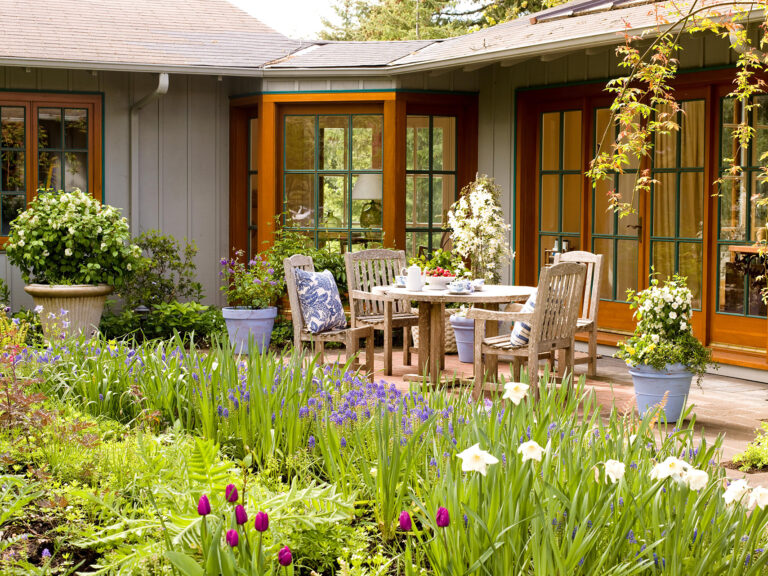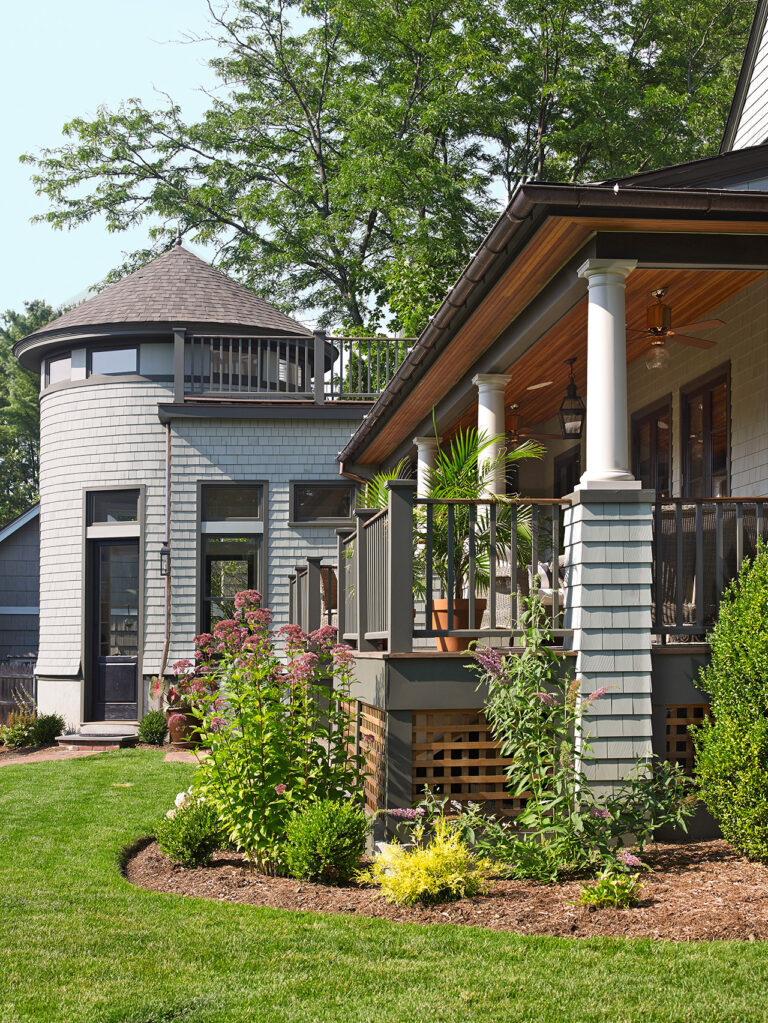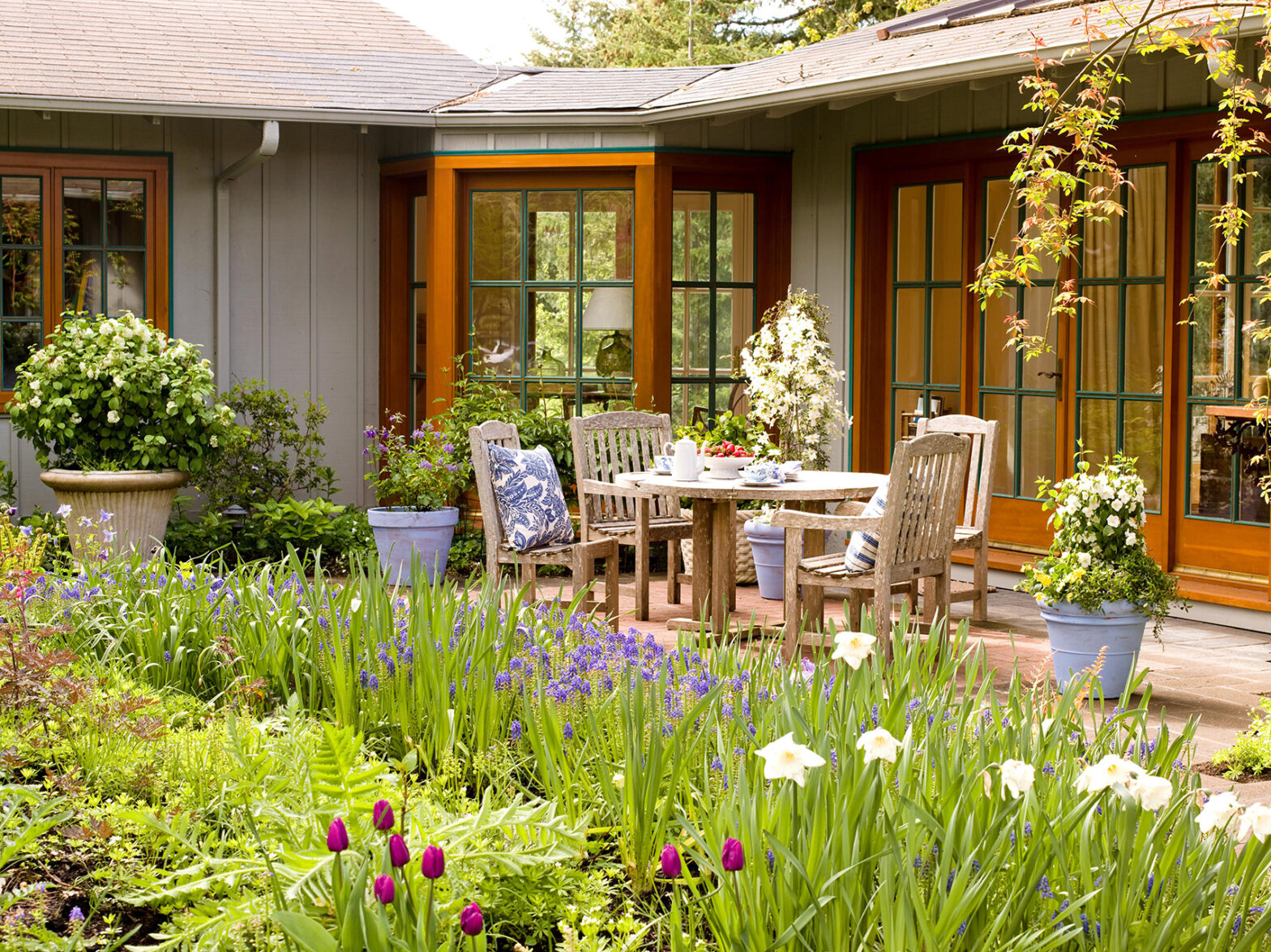Whether your yard just needs new plantings or a complete refresh, redesigning the landscape can be overwhelming. Here are seven must-know landscape design tips for the perfect garden.
By Kelly Roberson Updated May 21, 2019
If you’ve never tackled a landscape design before, you might be overwhelmed by all the choices you can make. But, if you think of it as a room inside your home, it makes it a lot easier. The same principles that guide your room setup inside should guide your designs outside, too. You know how to put together a room—so your landscape should be no problem! Here are seven landscape design ideas for beginners.

1. Determine Landscape Needs and Wants
Make a list of needs and wants. Do your kids need a play space? Do you want to grow vegetables? Would your family gather on a patio? Do some very rough sketches of the yard with thoughts of where you want to place things; it’s a great organizing principle for landscape design for beginners. They don’t need to be master plans (they can just be ideas), according to Marianne Lipanovich, author of the Big Book of Garden Designs. Her sketch for her front yard landscape design overhaul was just a few lines and a couple of circles. You can easily play around with ideas without a lot of time and commitment.

2. Think About Location
Study the sun and wind patterns. You might want to place a patio on the west side of the house, but it will get lots of afternoon sun, which means dinnertime in August won’t be relaxing—just hot. And wind whistling around a corner will quickly extinguish a fire pit. Those are common mistakes in backyard landscape design for beginners. Your design should take into account what the sun and wind do at different times of the day and year.
3. Sit Down and Enjoy Your Landscape
Live with it for a while. Coming to quick conclusions about your yard can lead to choices that don’t work in the long term. After spending more time outdoors, you’ll start to see areas where you want to go and sit that you wouldn’t have thought of at first, Lipanovich says.

4. Start Small
Home and garden television shows are masters at revealing complete outdoor makeovers in just three days—but they have a crew of 60, which is not a situation enjoyed by most beginner gardeners. Part of creating a landscape is slowly developing a plan and enjoying the process. From your master plan, start with a small flower bed. Go out and work on it for an hour or two when you have the time, and worry less about filling everything up right away. Lipanovich advises that you take your time, so you don’t take shortcuts or get too sloppy with your DIY landscape design.
5. Find a Focal Point
Any good garden design has a focal point or series of focal points, and it’s an easy principle to put in place in landscape design for beginners. That may be a sculpture or a stunning plant, a tree, or a series of shrubs. Let the design draw your eyes around the landscape, Lipanovich says.

6. Focus on Scale and Pacing
It’s the trickiest principle in landscape design for beginners, but scale and pacing give your yard a pulled-together look. There will be variations in size, shape, and color, with tall plants against a building or in the back of a flowerbed, and paths that lead people through the space. Lipanovich emphasizes the importance of finding a good balance between repetition and new elements. Repetition gives a sense of cohesion, but you also don’t want it to be monotonous. An occasional new element is better than having all different elements throughout.
7. Be Open to Change
Unless you’re strongly devoted to something, be honest about what you like—and what may fall out of favor. Even Lipanovich has found herself discovering elements she once liked that no longer reflects her style—it’s okay to take those out and try something new.
Remember: Patience is key to landscape design for beginners. If all of that bare space is too much to look at, and the kids and dogs are tracking in mud, rely on temporary solutions—annuals, mulch, fast-growing ground covers—to cover an area while you’re figuring out what you want. Lipanovich recommends relying on annuals and small perennials as you’re waiting for larger plants to fill in. You can always move them if you realize they’re in the wrong spot later on.

